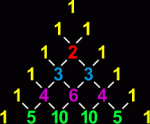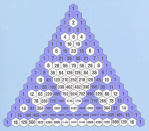
Graphic organizer to use with math vocabulary
Frayer Diagram
-
Integers- all whole numbers and their opposites.
Integers- any of the natural numbers, the negatives of these number or zero.
Merriam Webster The Free Dctionary\
2. Number sense Ones awareness and understanding about what Numbers are, the relationships, the magnitude, the related effect of operating on numbers, including the use of mental math and estimation.
Number sense In mathematics education, number sense can refer to “an intuitive understanding of numbers, their magnitude, relationships, and how they are affected by operations.”[
There are also some differences in how number sense is defined in the field of mathematical cognition. For example, Gersten and Chard say number sense “refers to a child’s fluidity and flexibility with numbers, the sense of what numbers mean and an ability to perform mental mathematics and to look at the world and make comparisons.”
http://en.wikipedia.org/wiki/Number_sens…
Posted 1 year ago
3. algebraic Numbers variables that represent rational numbers.
The sub set of the real algebraic numbers: the real roots of polynomials, Real algebraic numbers may be rational or irrational.
4. Real numbers all numbers, rational or irrational.
Real numbers are all the numbers on the continuous number line with no gaps. Every decimal expansion is a real number. Real numbers may be rational or irrational, and algebraic or non-algebraic (transcendental). pi = 3.14159… and e = 2.71828… are transcendental. A transcendental numbers can be defined by an infinite series.
Http://thinkzone.wlonk.com/Numbers/NumberSets.htm
5. Whole numbers counting numbers and their factions, 6/1 including 0.
Whole numbers counting numbers, positive integers. can be refered to as natural numbers
http://thinkzone.wlonk.com/Numbers/NumberSets.htm
6. Rational Numbers Any number that can be expressed as a/b with b not equal to 0.
Rational numbers are the ratios of integers, also called fractions, such as 1/2 =0.5 and 1/3 = 0.333… Rational decimal expansions end or repeat.
http://thinkzone.wlonk.com/Numbers/NumberSets.htm
7. Irrational Numbers- any number that cannot be expressed as a/b. In decimals never ending.
8. Commutative properties –
For adding
The order in which you add a series of numbers doesn’t change the sum. Simple for any numbers a and b, a + b = b + a.
For multiplying
The order in which you multiply a series of numbers doesn’t change the product.
Simply for any numbers a and b ab = ba,
9. Addends- numbers being added.
10. Inverse refers to the relationship to the opposite of a number. It can mean to reverse something, turn it upside down. Or it can mean the opposite.
When adding, add the opposite:
a+ -a = o 3 + -3= 0
Used in matrix.
When multiplying, find the reciprocal
a * 1/a = 1
for whole numbers
1. Convert to fraction: 3= 3/1
2. To inverse turn upside down 1/3 known as reciprocal.
sS the inverse of 3/1=1/3 so 3/1 * 1/3=1 (a/1=1/a)
Used in dividing rational numbers and in a Matrix





